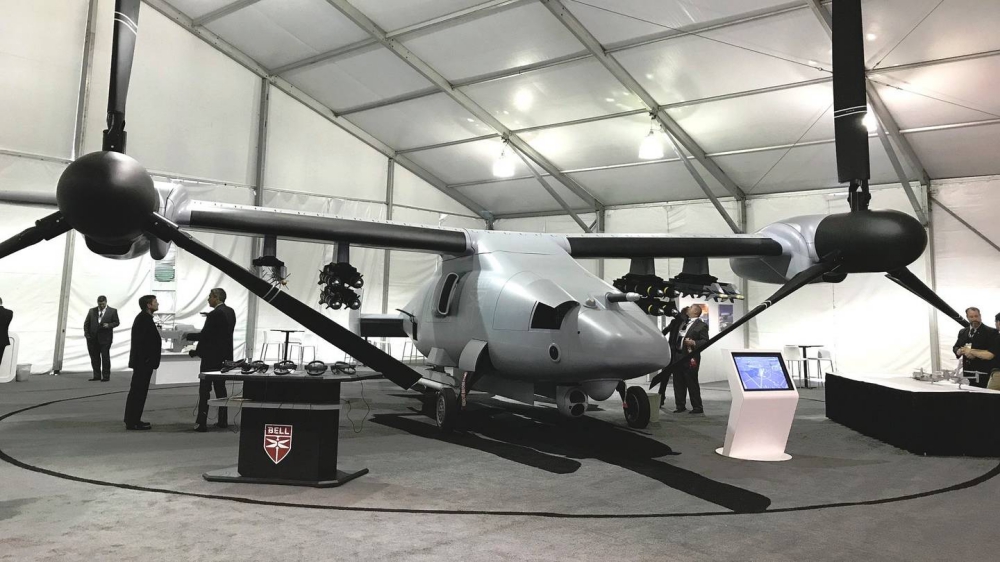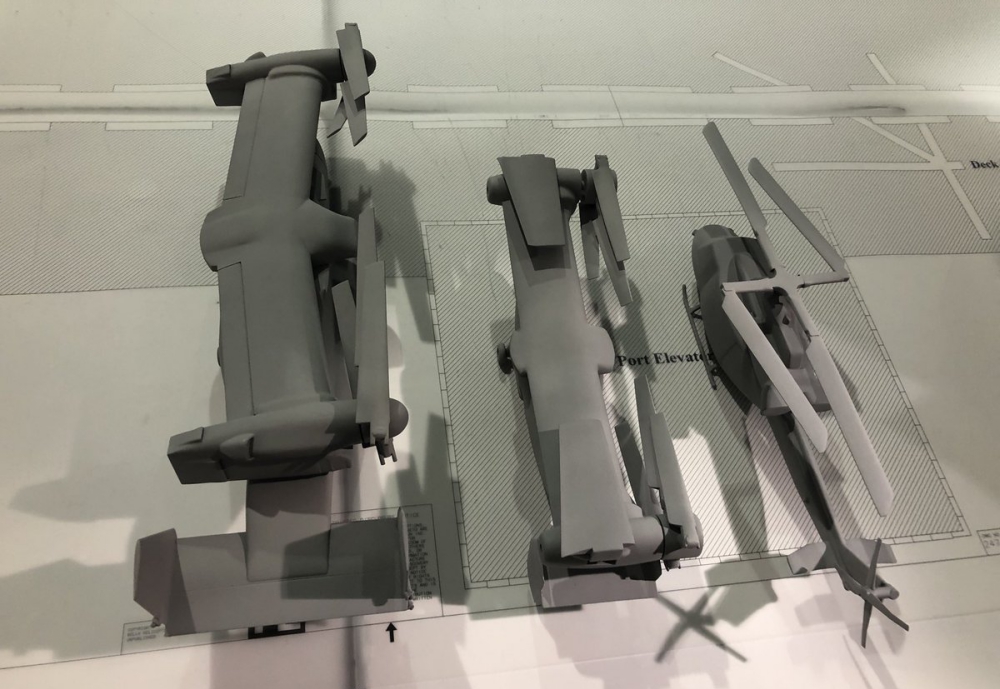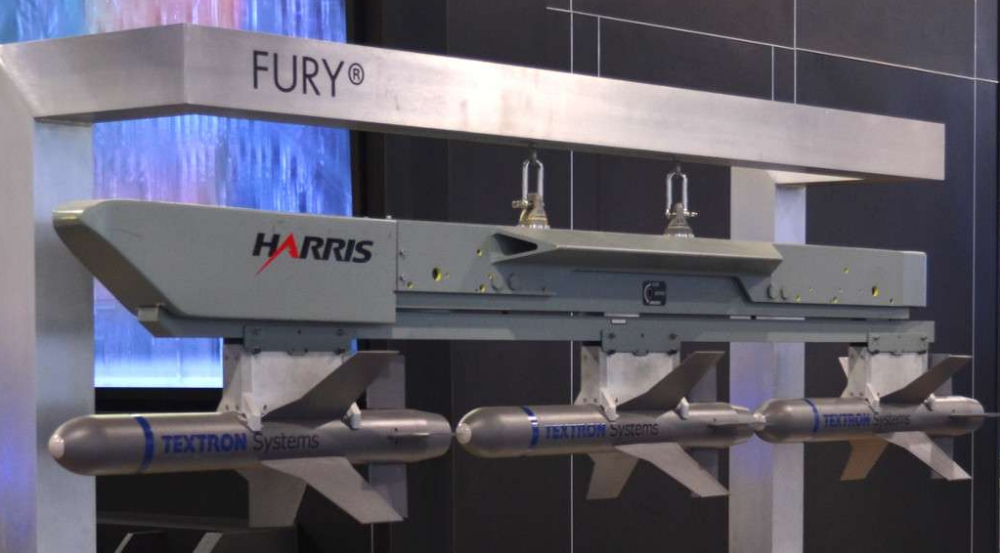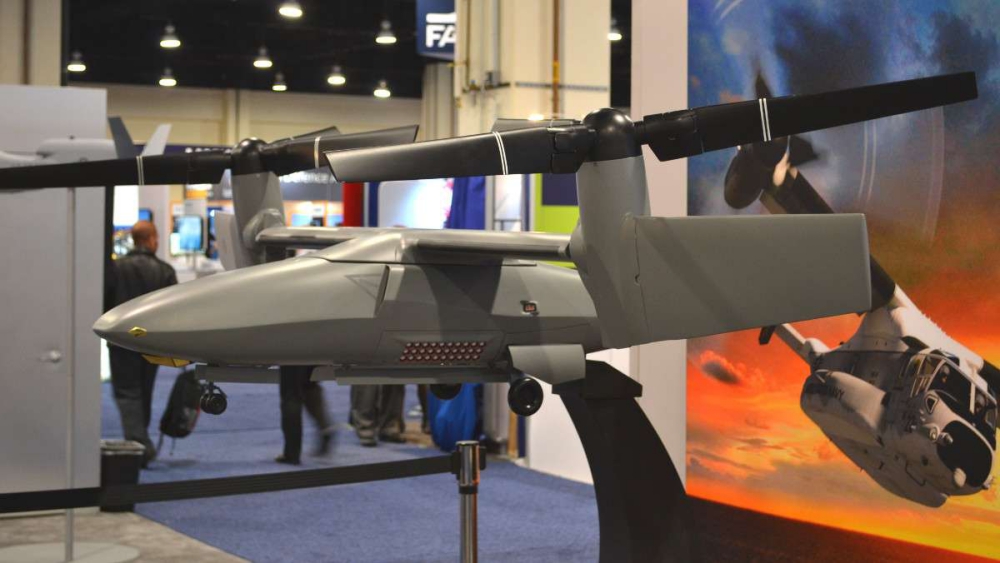As the U.S. Marine Corps looks to move ahead with its multi-role, vertical landing and takeoff-capable drone program, known as MUX, Bell has unveiled a new, full-scale mock-up of its V-247 Vigilant unmanned tilt-rotor at a technology exposition at one of the service’s own bases. The company has been actively pitching the design as an option for MUX project, but it has a modular design that could make it appealing to other U.S. and foreign military services, as well.
Bell showed the full-size model to the public for the first time at the 2018 Modern Day Marine Expo at Marine Corps Base Quantico in Virginia on Sept. 25, 2018. The firm first announced it was working on the V-247 design at all in 2016, around the same time that the Marines first revealed the MUX concept, which officially stands for Marine Air Ground Task Force Unmanned Aircraft System Expeditionary.
“The Bell V-247 Vigilant is leveraging combat-proven technology making the future of aviation a reality today,” Todd Worden, Bell’s Senior Manager for Global Military Business Development speaks, told attendees at the Modern Day Marine Expo while standing in front of the model. “It’s a testament to the power and versatility of tilt-rotor flight.”
The company has long pitched the design as a multi-purpose platform, with multiple internal payload bays for weapons, radars and other sensors, and other specialized mission equipment. The new model is in a light attack configuration with four underwing pylons and sensor turret under the fuselage that could carry various electro-optical and infrared cameras, as well as a laser designator.
Bell’s mock-up at the Modern Day Marine Expo was carrying four dummy AGM-114 Hellfire missiles and a dozen inert Fury multi-mode precision-guided miniature munitions. Textron, Bell’s parent company, produces Fury, which is a small glide bomb that can use either laser or GPS/INS guidance options to attack stationary or moving targets in various weather and environmental conditions.
What the Marines refer to as “Offensive Air Support” is relatively low on their priority list for the MUX drone, ranked fifth out of seven total potential missions for the system, according to documents the service publicly released in June 2018. An airborne early warning platform is the Corps’ most pressing demand as it is a capability the Marines presently rely on other services to provide. You can read about the MUX’s possible mission profiles in greater detail in a past War Zone feature on this system.
The modular nature of the V-247 could give it the capacity necessary to carry the powerful air search radar necessary for the airborne early warning mission. The Vigilant in this configuration would also need significant communications systems and data links necessary to send out critical information to other Marine assets and command centers.
The V-247 model at the Modern Day Marine Expo also notably features an in-flight refuelling probe, which was not present on earlier models and in previous concept art of the design. This feature, combined with the Marines’ plans to adopt an aerial refuelling tanker kit for the Osprey, would help extend the overall range of the drones or allow them to loiter over a particular area of the battlefield for extended periods of time. This could be especially useful for examples of the drone operating in the airborne early warning role, but would also be valuable for versions flying other MUX missions, such as persistent surveillance, armed over-watch, and communications relay missions.
Source: The Drive/The Warzone





